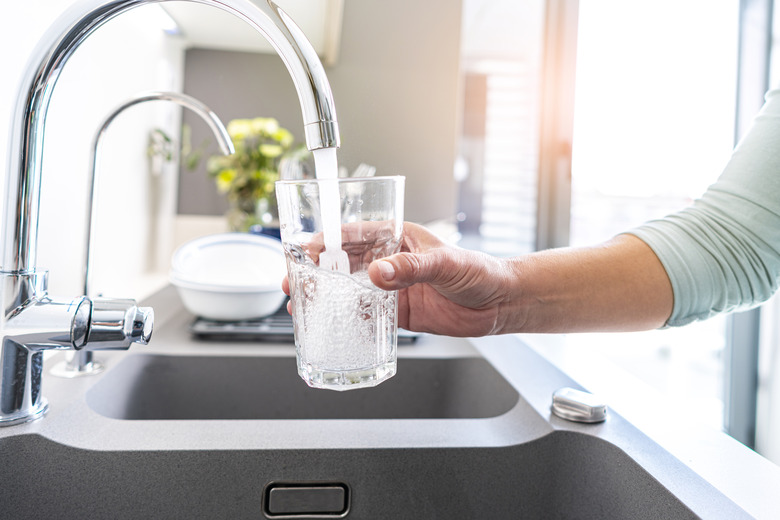What Is The Normal Water Pressure For A House?
We may receive a commission on purchases made from links.
Normal water pressure in a house ranges from 45 to 80 pounds per square inch, or psi. If it's too high, you might waste a lot of water, and if it's too low, you may experience less-than-ideal pressure in the shower. Even if the water pressure running into your home is within the normal range, the water volume in your house might seem lower due to blockages along the way. Here's a look at why your household's water pressure is important and how to test it using a pressure gauge attached to an outdoor faucet.
Why Water Pressure Matters
Why Water Pressure Matters
While 45 to 80 psi is the typical water pressure range for a house, the pressure isn't usually considered to be low unless it's below 40 psi. Numbers below 30 psi are considered too low, while the average local codes only require the pressure to be above 20 psi. At the opposite end of the spectrum, anything above 80 psi is too high.
Low pressure is usually more of an annoyance than anything else, but in some cases, it could affect the operation of appliances, such as a washing machine. For instance, if your water pressure is too low, a Samsung washing machine might automatically stop the fill cycle if the machine isn't filled in a predetermined amount of time. The water valve within it might also fail. In addition, pressure washers might not function as desired with extremely low pressure.
High pressure puts extra stress on water pipes, fixtures, and connectors, which could lead to damage or failure somewhere along the way. Even without some type of plumbing problem, excessive water pressure means excessive water usage, resulting in higher water bills and lots of wasted water.
How to Test Your Home's Water Pressure
How to Test Your Home's Water Pressure
It's not hard to figure out your home's actual water pressure with an inexpensive water pressure test gauge designed for threaded hose bibs. Here's how to do it:
- Connect the gauge to a hose bib, also known as a spigot, on your home's exterior, tightening the connection by hand.
- Make sure no water is running anywhere in the house and then turn the faucet with the gauge on it all the way on.
- Check the gauge's dial or face to get a reading of your home's water pressure.
If the device leaks, turn off the water and insert a rubber washer inside the opening of the gauge, much as you might do with a garden hose leaking at the spigot.
What if the Water Pressure Is Low Only in a Shower?
What if the Water Pressure Is Low Only in a Shower?
If your home's water pressure seems normal everywhere but the minimal spray that comes from the showerhead, then mineral deposits or the showerhead itself may be to blame. If the same showerhead used to emit sufficient pressure and no one has adjusted it in any way, try soaking the head in a plastic bag filled with vinegar, which removes mineral deposits.
If the showerhead never had sufficient pressure but the bathtub and bathroom sink do, it could be a low-flow showerhead, or there may be adjustments for pressure with a little thumb screw on the side of the head or by turning the bottom of the actual showerhead. Look for such adjustments on the showerhead the next time you take a shower and experiment with a setting that offers more pressure.
If it's a rain-style showerhead with no settings for water flow, this type of showerhead generally doesn't offer much pressure. But you can swap the head for a high-pressure massaging style or one that emits adjustable jets of water.
